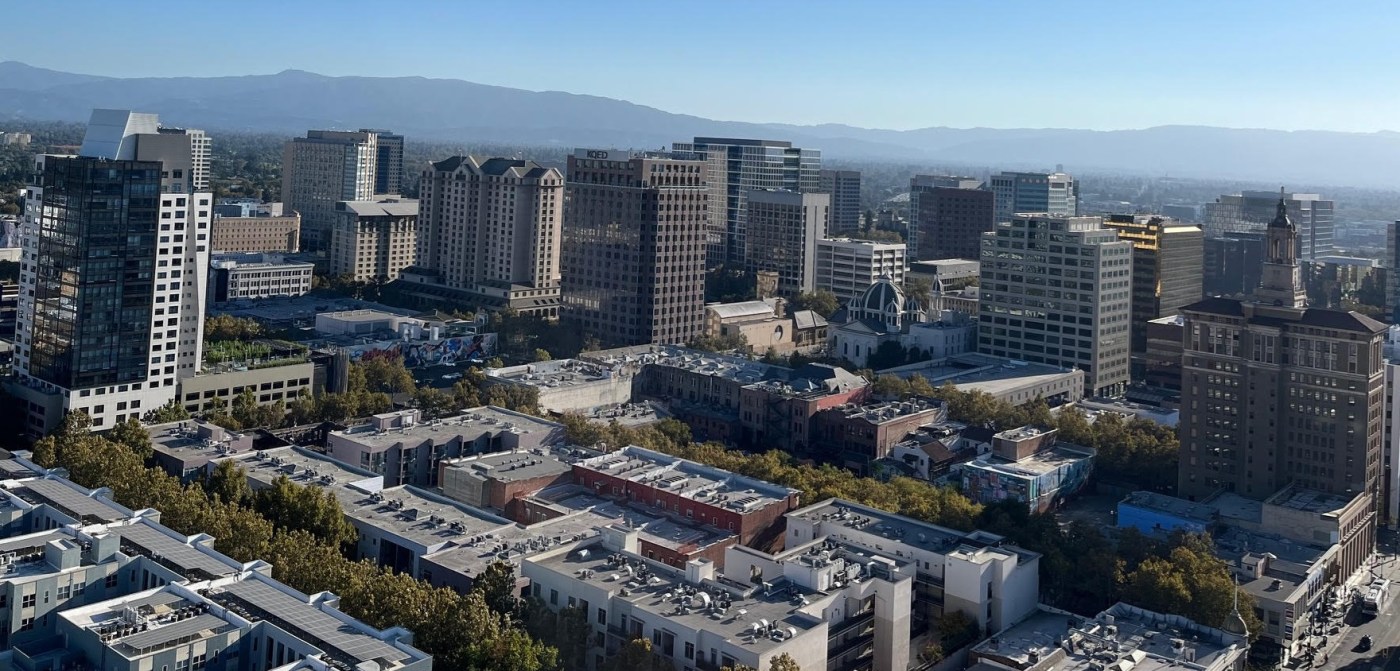
San Jose program could cut red-tape stifling major development projects downtown
In an effort to spur development downtown, San Jose officials are proposing streamlining the approval process for major innovative projects even though they may not completely conform to city regulations.
Instead of watching potential projects fall to the wayside because of onerous zoning rules and development regulations, the city wants to create a path for developers to pitch feasible projects so long as they provide “an extraordinary benefit” to the city, such as a major investment, meeting climate goals, or bolstering housing production.
“The nature of zoning and the way we approach it is that we plan in advance and tell the market what to build, where and how, and to some extent that makes sense,” San Jose Mayor Matt Mahan told The Mercury News. “We don’t want to have a daycare center next to an industrial site for obvious reasons, but we tend to be very prescriptive in California, and San Jose is no exception. My hypothesis is that by creating more flexibility and inviting the market to pitch the city on what may be viable to give insight, we will get proposals for things that may not perfectly conform to the zoning and development regulations we have today but may ultimately be really good things for the community.”
Mahan said that in recent years, multiple investors have come to the city with potential projects but have concluded that it will take them a couple of years to get approval for a non-conforming use and ultimately decided that it was not worth the risk.
He noted how zoning regulations stifled a developer who had pitched a 20-story high-rise with ground-floor retail at the site of a two-story commercial building that sustained fire damage.
“Now, when you look back a few years later, we would be so happy right now to have the retail rebuilt with 18 or 19 floors of residential housing on top — housing which we so desperately need — but instead, what we have is a building that’s still vacant and still fire damaged because there simply wasn’t a viable use where someone could invest and get a return to justify bringing that retail back and rehabbing the building,” Mahan said.
As part of the proposal that the City Council will consider Tuesday, Mahan and Councilmembers Dev Davis and Pam Foley have asked city staff to develop a process with clear submission requirements and objective criteria for evaluating project proposals, such as density levels or housing production.
“It may have creative mixes of public space and rooftop uses that we oddly enough don’t see so commonly in San Jose despite our great weather,” Mahan said. “It may combine uses in a creative way with residential, retail and entertainment. This is really about saying that outside of industrial production, we want to know what your most creative ideas are, but the benefit has to be that there’s a significant value in terms of economic activity that would be growth in the tax base, but also an amenity that the community really wants, a lot of housing, a lot of job creation potential or some combination.”
While the city still needs to approve the program and develop the evaluation criteria, business and labor groups have called the proposal a step in the right direction.
“We all know we need more housing and the problem is, especially with interest rates and high cost of materials, it’s very difficult for housing projects to pencil out,” labor union advisor Doug Bloch said. “We think that San Jose needs the flexibility to consider non-traditional projects so that we can build more housing, we can make projects pencil out and we can put people from San Jose to work and give them pathways to the middle class through our apprenticeship program.”
San Jose is starting in the downtown area because the city is trying to build a more dense, mixed-use environment there.
“I think what this could accomplish is that if there are projects that have not been contemplated before and had too many barriers to start, it should solve the problem,” said Bob Staedler, a land use and development consultant at Silicon Valley Synergy. “By starting in the downtown core, it should alleviate concerns from residents and businesses alike that they will not be affected.”
If the downtown program is successful, Mahan said the city could follow a similar path with its urban villages. While the city aimed to build more dense, mixed-use development in these areas, Mahan thinks the city passed too many restrictions, inadvertently stifling development.
He specifically noted some restrictions that required a certain level of job growth before housing could be built, which in turn made the residential component no longer viable as costs skyrocketed. Mahan added that if the city continues to dictate when and where jobs and housing production should be centered, it may end up with little of both.
“We introduced this notion of urban villages, which were meant to be mini downtowns — these sort of dense mixed-use, walkable transit-oriented communities that we know we need more of as we grow — because we can’t keep sprawling out,” Mahan said. “We’re going to need to build up near transit in places like downtown and these urban villages that meet certain criteria in terms of infrastructure and transit service levels. We have not seen as much investment and development in urban villages as anticipated over a decade ago when that became a core strategy of the general plan as we look to future general plan updates.”
While San Jose navigated its $50 million budget deficit this year, city leaders expect tougher budgetary challenges in the years ahead. To help spur development, the city extended its downtown high-rise program, which waived construction taxes and some building fees, and created a two-year leasing incentive program to draw new tenants to downtown’s glut of empty office space.
Related Articles
Palo Alto estate lands buyer in real estate deal that tops $10 million
Getty-owned ‘Temple of Wings’ mansion in Berkeley Hills is bought
San Jose affordable senior housing project advances with property deal
Recent row at a Berkeley community meeting underscores growing incivility
Affordable homes might sprout in Oakland at Ghost Ship fatal disaster site
However, those policy initiatives might not be enough, which is why the city is turning to this outside-the-box program to get shovels into the ground faster.
“My hope is to be able to come back to you in the coming months and years and have actual real projects that move forward because we sent a message to the market that San Jose is open for business,” Mahan said. “If it doesn’t work, we’ll try other things.”


